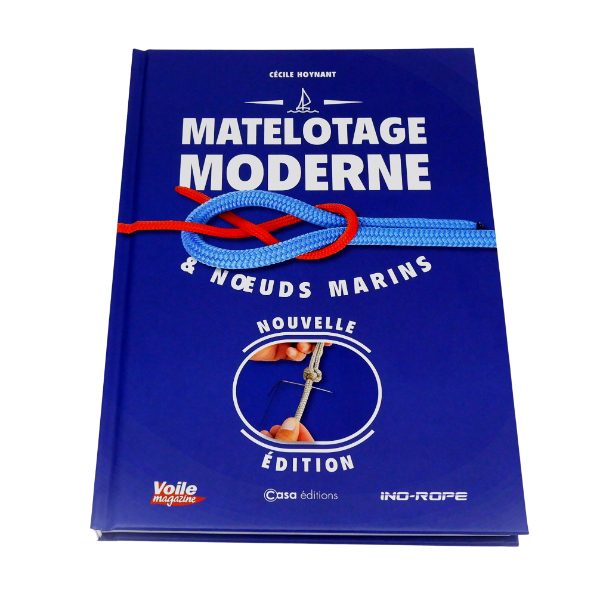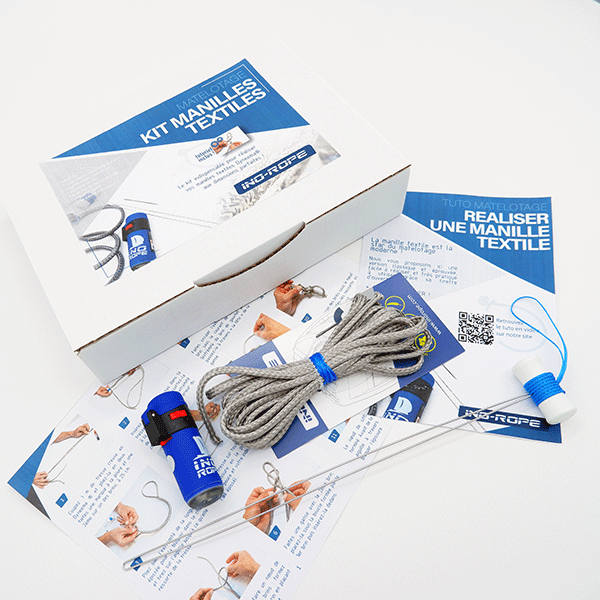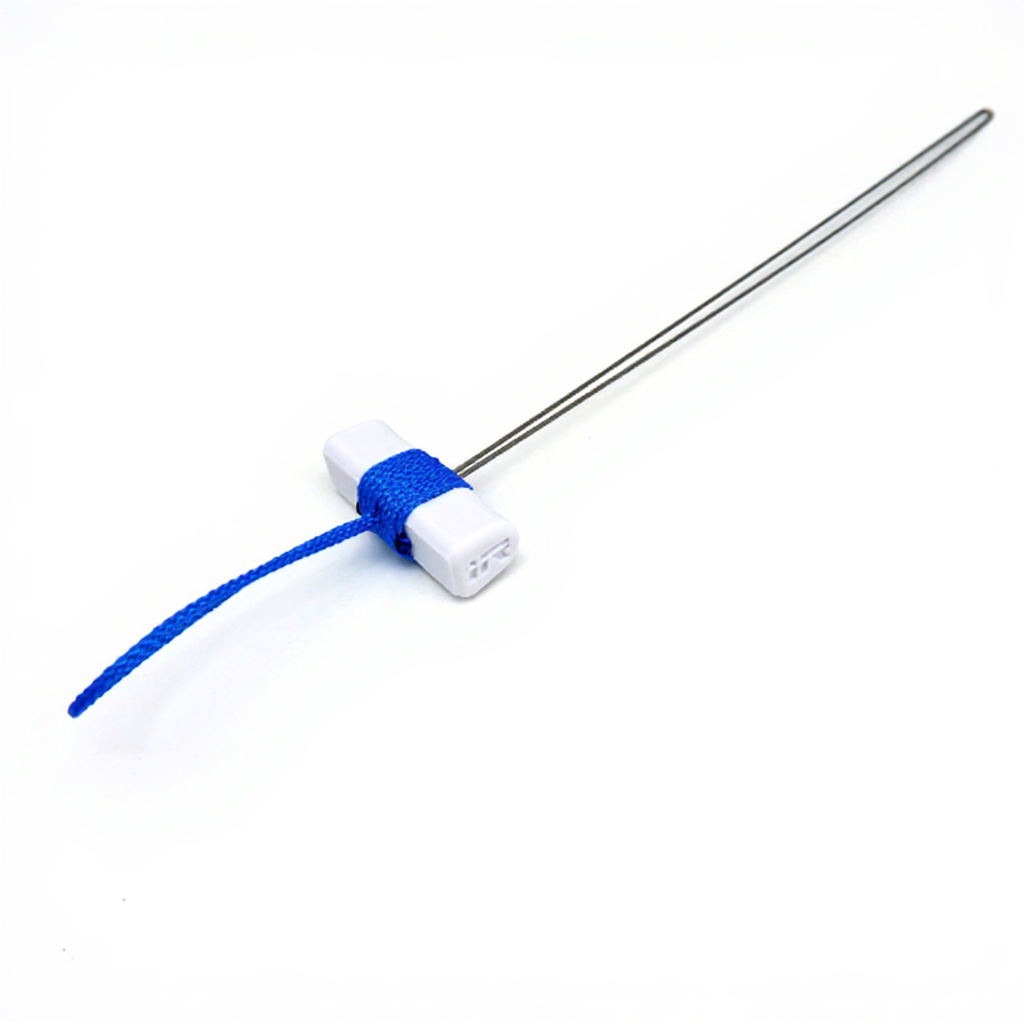-

-
 The easy-making textile shackle kit35,00 € TTC
The easy-making textile shackle kit35,00 € TTC -
 Long eye splicing needles for seamanship16,90 € – 24,90 € TTC
Long eye splicing needles for seamanship16,90 € – 24,90 € TTC
Similar Posts
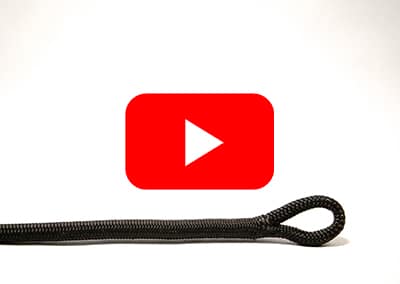
Rope work : the double-braid Polyester splice
Rope work : the double-braid Polyester splice The double-braided eye splice, made on a rope with a polyester core, is a must for the regular rigging of pleasure boats, to be used without moderation for halyard, sheet and tackle terminations. This video tutorial goes through all the steps to splice the core inside the sheath…
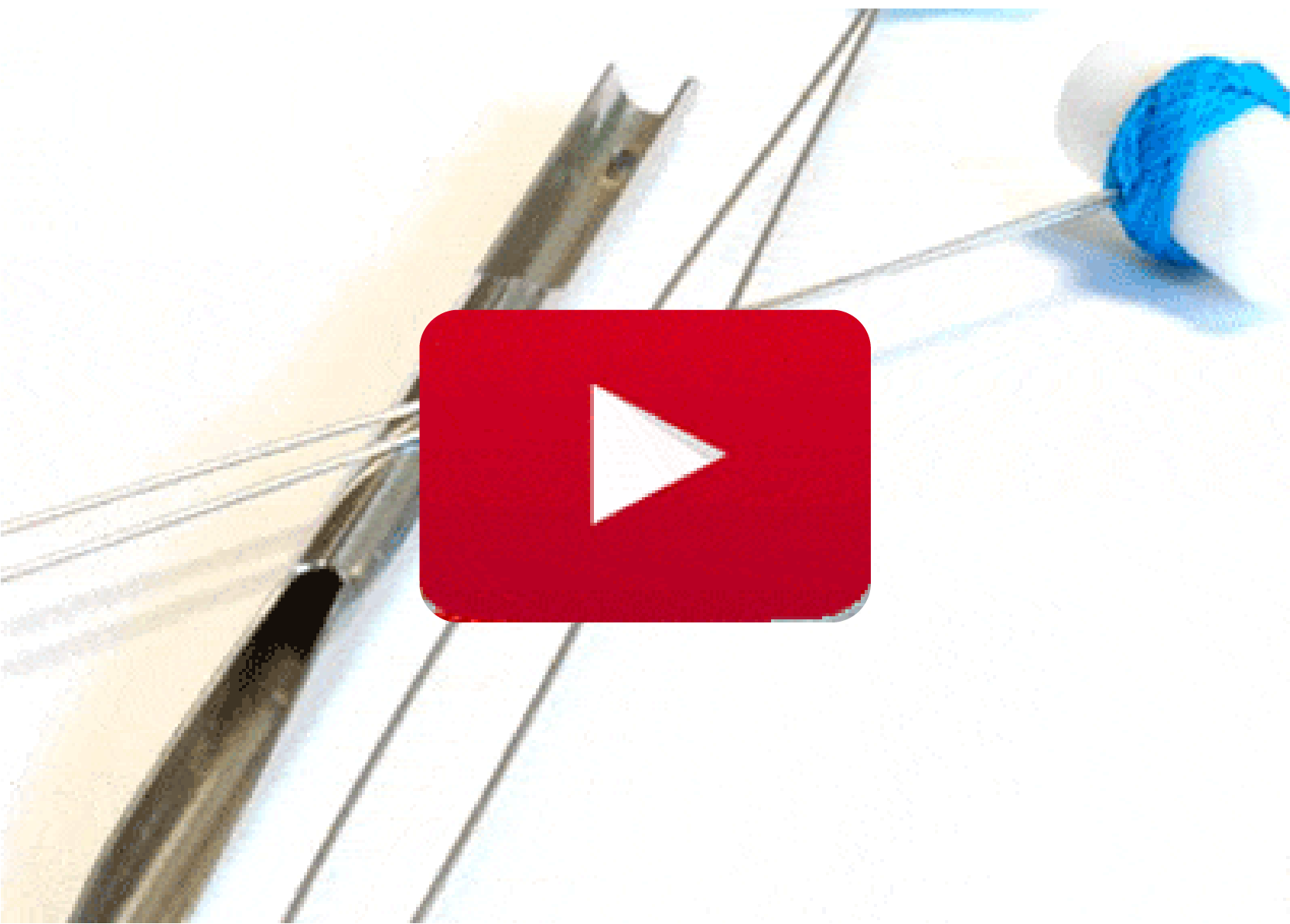
Splicing needle with long eye, instructions
L’aiguille à épisser à long chas | Tuto matelotage Aiguille à épisser à long chas, mode d’emploi L’aiguille à épisser à long chas n’est pas une curiosité réservée aux mateloteurs confirmés mais un outil très pratique et à la portée de tous. Simple tige métallique pliée en deux et équipée d’une poignée, l’aiguille à long chas permet de réaliser…
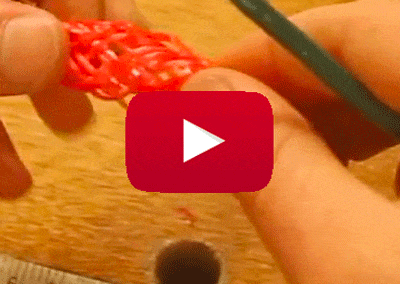
Splicing without a needle: tutorial
Splicing without a needle: tutorial Splicing without a needle To begin, as per the title, this video tutorial shows an ultra-practical and simple technique to splice a hollow braid without a needle. Adhesive tape is all you need to save the day, if you have forgotten your splicing kit. With her deep, smooth and sensual…
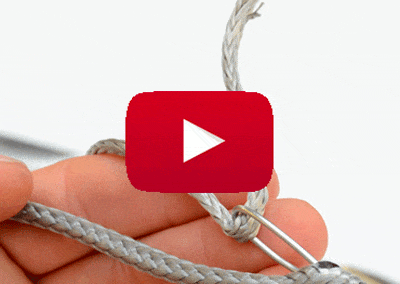
The messenger trick
Splice: The messenger trick To sum up, in this tutorial, Julien Barnet reveals a foolproof technique to splice a messenger line onto a rope that is hard to work on. When the hollow fid and even the long eye splicing needle cannot be fed through (very fine braid, tight cover), he uses a finer messenger…
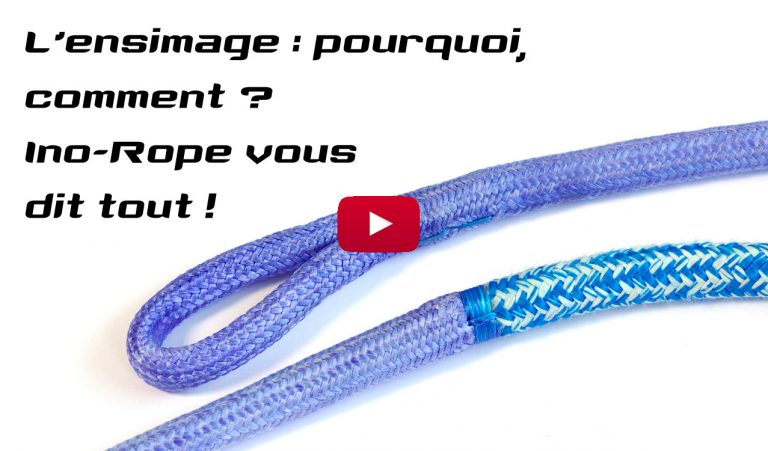
The coating process
The coating process This short video tutorial explains what coating is and which method is best to coat your ropes yourself. A really simple and fun technique to colour your Dyneema® ropes, while protecting them from UVs, chafing, and salt.
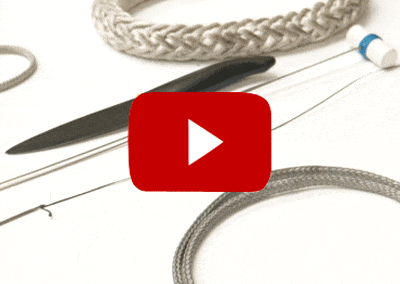
Rope work: learning how to make a loop
Rope work: learning how to make a loop Splicing a textile connector: learning how to make a loop To begin, the loop is a multi-purpose textile connector that you absolutely have to know about! Indeed, reliable and multi-functional, the loop is often fitted with a cow hitch knot around a chainplate, it can also be…


